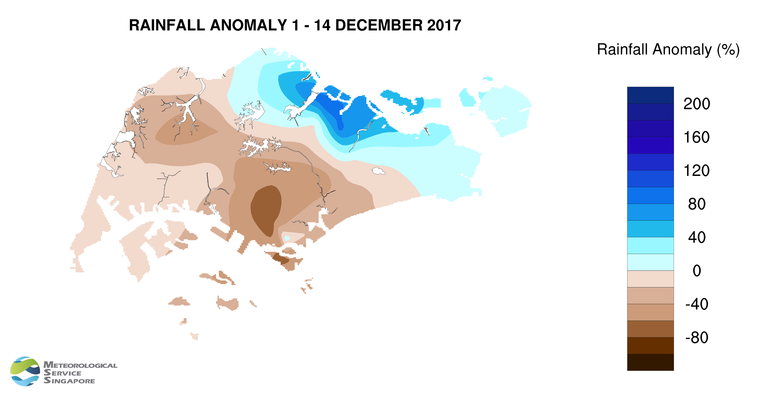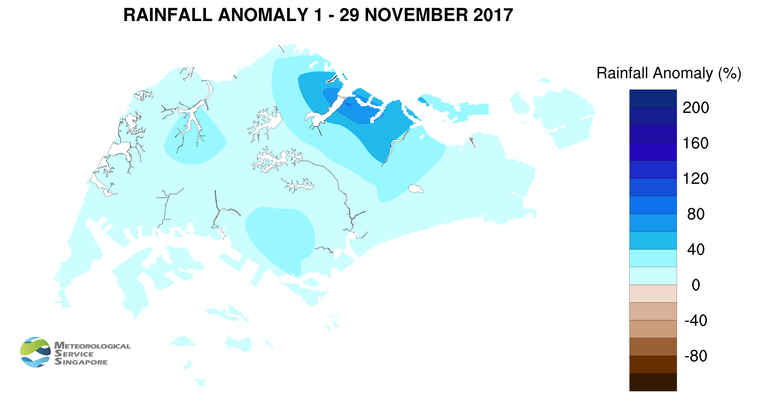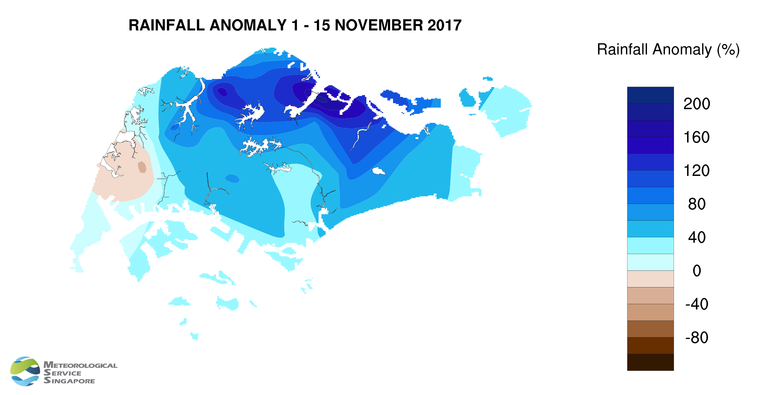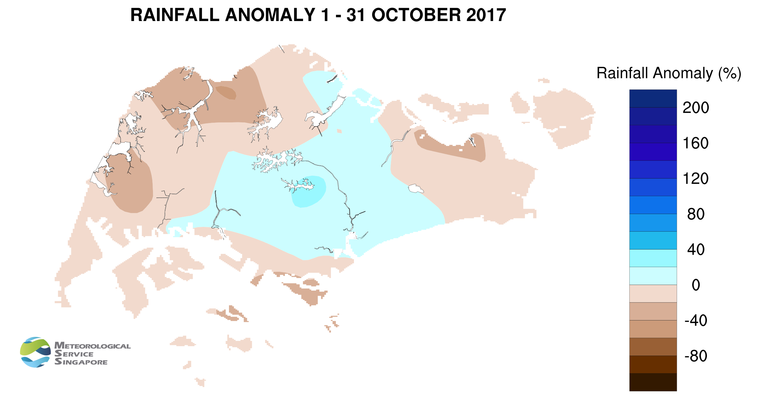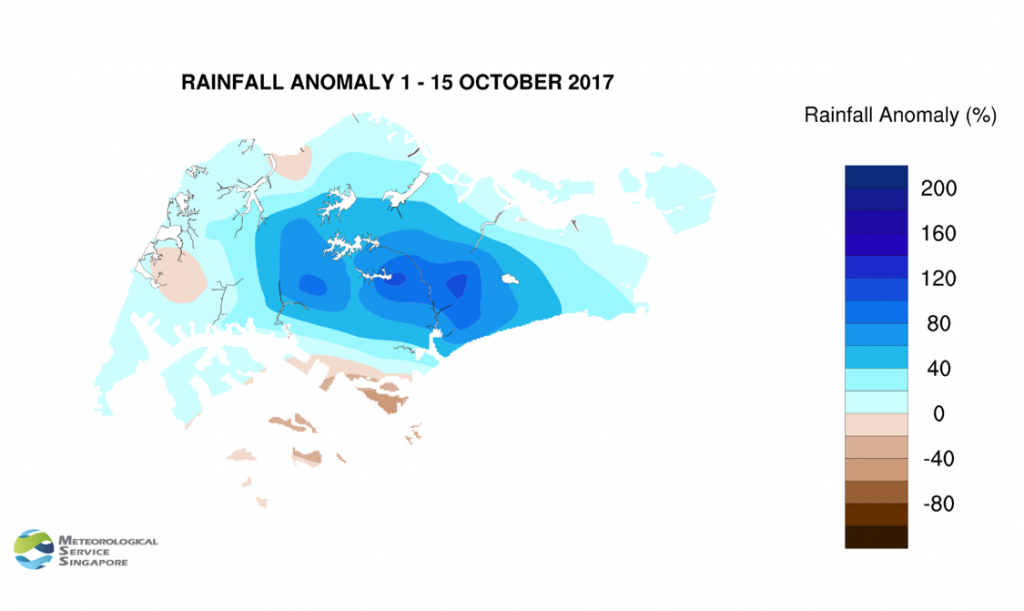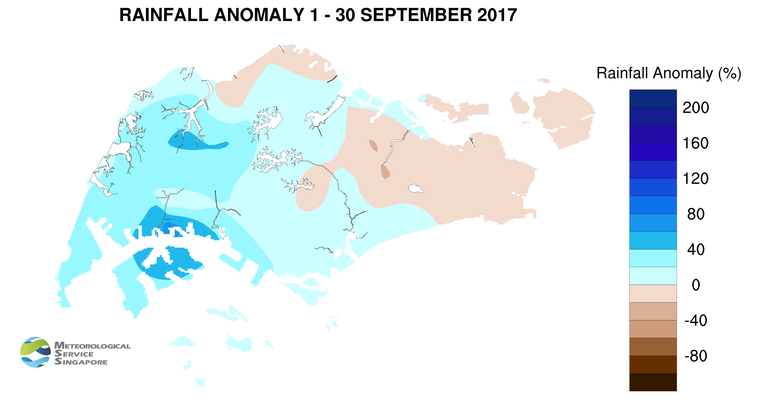Singapore to experience short-duration thundery showers in the afternoon and evening, as well as occasionally windy conditions under the influence of Northeast Monsoon.
Singapore, 15 December 2017 – Singapore and the surrounding region is currently experiencing the wet phase of Northeast Monsoon which typically lasts from December till January. The low level winds over Singapore are expected to blow predominantly from the northeast or northwest.
2 In the next fortnight, Singapore is expected to experience moderate to heavy short-duration thundery showers in the afternoon and evening on five or six days. In addition, a weak monsoon surge[1] could develop over the South China Sea and the surrounding region and this could bring a few days of occasionally windy conditions with moderate rain as well as cooler temperatures to Singapore. On one or two days, the winds in the region may temporarily blow from the west due to a low pressure system in South China Sea and bring widespread moderate to heavy thundery showers in the predawn hours and morning. Rainfall for the month of December 2017 is expected to be slightly below normal.
3 During the period, slightly cooler night-time minimum temperature of 23°C to 24°C can be expected. The maximum day-time temperatures are likely to range between 31°C and 33°C.
4 For updates of the daily weather forecast, please visit the MSS website (https://www.weather.gov.sg), NEA website (www.nea.gov.sg), or download the myENV app, MSS’ Weather@SG app.
REVIEW (1 – 14 December 2017)
5 In the first fortnight of December 2017, Northeast Monsoon conditions prevailed over the region. Low level winds over Singapore were blowing mainly from the northeast or northwest.
6 During the early part of the fortnight, Singapore experienced afternoon showers mainly over the northern parts of the island. Thereafter increasing shower activities were experienced in Singapore due to the influence of the strengthening north-easterly winds in South China Sea. During the second week of the fortnight, Singapore experienced widespread moderate to heavy showers in the afternoon and early evening on several days. The highest daily rainfall of 74.6mm was recorded on 10 December 2017 around Upper Peirce Reservoir area.
7 The daily maximum temperatures during the period generally ranged between 31°C and 33°C. As wetter weather conditions set in during the second week of the fortnight, slightly cooler night-time temperature of 23°C to 24°C was experienced, with the lowest minimum temperature of 22.3°C recorded on 14 Dec 2017 over the northern part of the island.
8 More than two-thirds of the island received well below normal rainfall in the first fortnight of December 2017. The highest rainfall of 268.6mm (96% above average) was recorded around the Seletar area. Rainfall was lowest around the Queenstown area where 25.6mm (81% below average) was recorded.
[1] A monsoon surge refers to the strengthening of northeasterly winds blowing from a strong high-pressure system over the northern Asian continent toward the South China Sea, bringing periods of prolonged widespread rain and windy conditions to the surrounding region including Singapore and Peninsular Malaysia. (Further information is available at https://www.weather.gov.sg/learn_weather_systems/)
CLIMATE STATION STATISTICS FOR December (Climatological reference period: 1981 – 2010)
| Mean daily maximum temperature | 30.2 °C |
| Mean daily minimum temperature | 24.0 °C |
| Mean monthly temperature | 26.4 °C |
| Mean rainfall for the month | 318.6 mm |
| Mean number of rain days | 18 |
| Highest monthly mean daily maximum temperature | 31.3 °C (1997, 2002) |
| Lowest monthly mean daily minimum temperature | 23.0 °C (1981, 1983) |
| Highest monthly rainfall | 765.9 mm (2006) |
| Lowest monthly rainfall | 62.9 mm (1989) |
